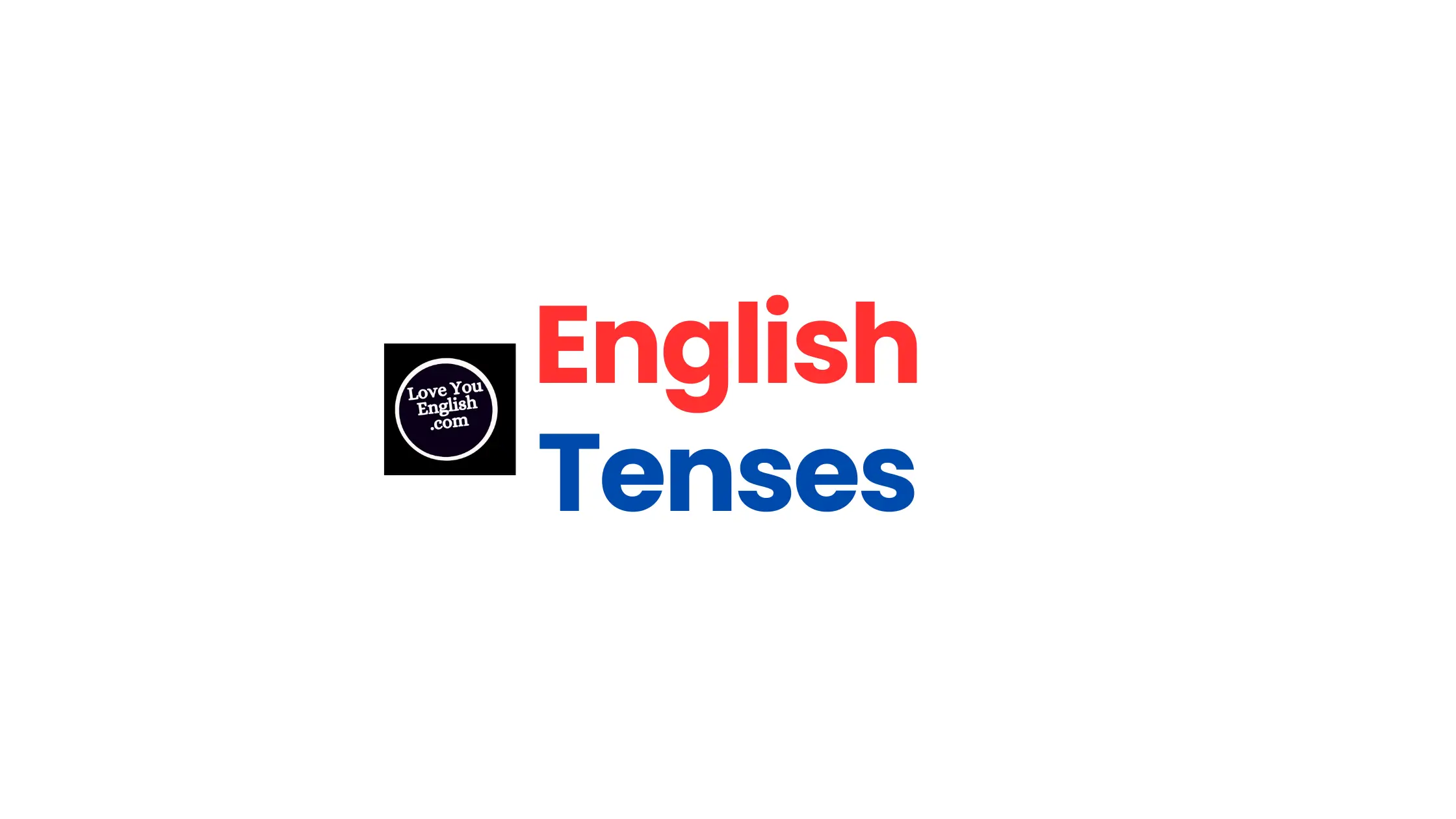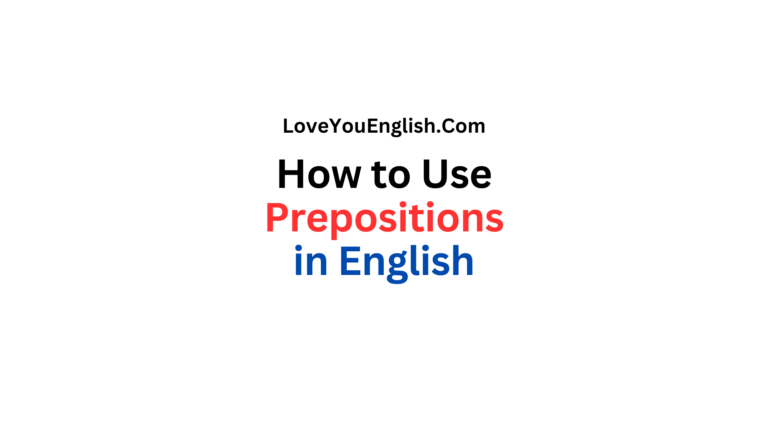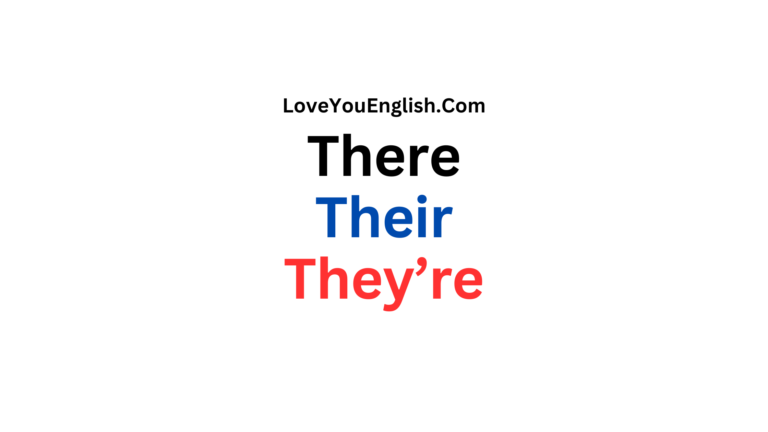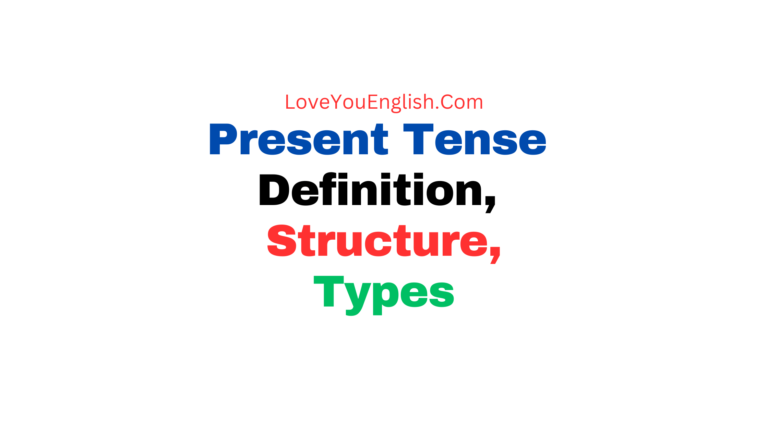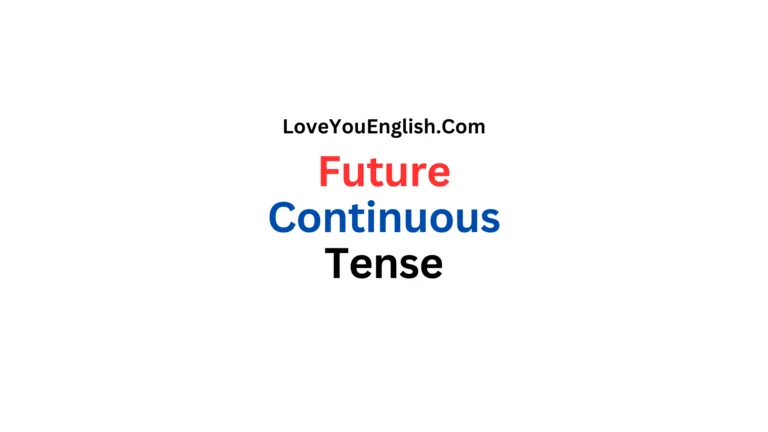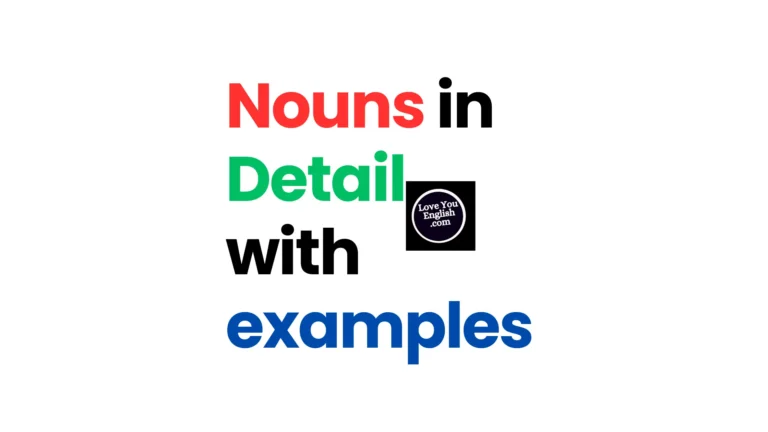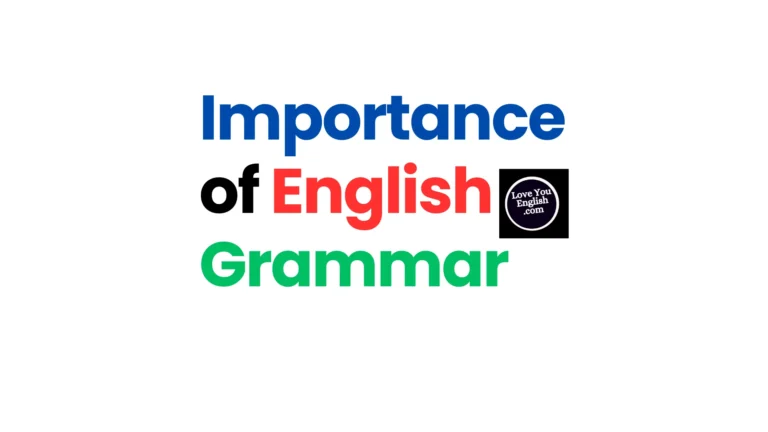English Verb Tenses with Examples
English Verb Tenses with Examples
Hello everyone!
Today, we’re going to dive into the exciting world of English tenses!
Have you ever wondered how we talk about things that are happening right now, things that happened in the past, or things that will happen in the future?
Well, today, we’re going to learn all about English tenses and how they help us tell stories, describe events, and talk about our everyday lives.
English tenses are like special words that help us understand when something is happening.
They’re really important because they let us know if an action is happening right now, if it happened before, or if it will happen later.
We use different tenses to talk about different times, and each tense has its own special way of telling us about when something is happening.
So, let’s jump right in and explore the amazing world of English tenses together!
First, let’s start by exploring the Present Tense together!
I. Present Tense
In the Present Tense, we talk about things that are happening now or things that happen regularly.
There are three main types of Present Tense that we’ll learn about: Simple Present, Present Continuous (Progressive), and Present Perfect.
A. Simple Present
Form: The Simple Present is made using the base form of the verb.
Example: “I eat.”
Here, “eat” is the base form of the verb without any changes.
Use: We use Simple Present for general truths, habits, and routines.
Examples:
“The sun rises in the east.” (General truth)
“She reads a book every night before bed.” (Habit)
“They play soccer every Saturday.” (Routine)
B. Present Continuous (Progressive)
Form: The Present Continuous is formed with “am/is/are” + base verb + -ing.
Example: “I am eating.”
Here, “am” is used with “eating,” which is the -ing form of the verb “eat.”
Use: We use Present Continuous for actions happening right now or temporary actions.
Examples:
“She is reading a book.” (Action happening now)
“They are playing soccer in the park.” (Action happening now)
“I am learning to swim.” (Temporary action)
C. Present Perfect
Form: The Present Perfect is formed with “have/has” + past participle of the verb.
Example: “I have eaten.”
Here, “have” is used with “eaten,” which is the past participle form of the verb “eat.”
Use: We use Present Perfect for actions that started in the past and continue into the present or for past actions with relevance to the present.
Examples:
“She has lived in this city for ten years.” (Action started in the past and continues)
“I have finished my homework.” (Past action with relevance to the present)
“He has visited France twice.” (Past action with relevance to the present)
Putting It All Together
Now that we’ve learned about Simple Present, Present Continuous, and Present Perfect, let’s see how they can be used in sentences together:
Simple Present: “She reads a book every night.”
Present Continuous: “She is reading a book right now.”
Present Perfect: “She has read five books this month.”
In these sentences, we see how each type of Present Tense helps us talk about different aspects of time and actions.
Practice Time! -1
Now, let’s practice using the Present Tense with some fun exercises:
Fill in the blanks with the correct form of the verb:
(a) I ___ (play) basketball every Sunday.
(b) They ___ (watch) a movie right now.
(c) She ___ (finish) her homework already.
Now, let’s explore Past Tense in English.
Understanding how to talk about things that happened in the past is an exciting part of learning English.
Let’s dive in and discover the Simple Past, Past Continuous, and Past Perfect tenses together!
II. Past Tense
In the Past Tense, we talk about actions or events that happened before now.
There are three main types of Past Tense that we’ll learn about: Simple Past, Past Continuous (Progressive), and Past Perfect.
A. Simple Past
Form: The Simple Past is formed by adding -ed to regular verbs or using the past tense form of irregular verbs.
Example: “I played.”
Here, “played” is the past tense form of the verb “play.”
Use: We use Simple Past for completed actions in the past.
Examples:
“She danced at the party.” (Completed action)
“He finished his homework yesterday.” (Completed action)
“We visited the museum last week.” (Completed action)
B. Past Continuous (Progressive)
Form: The Past Continuous is formed with “was/were” + base verb + -ing.
Example: “I was eating.”
Here, “was” is used with “eating,” which is the -ing form of the verb “eat.”
Use: We use Past Continuous for actions that were in progress at a specific time in the past.
Examples:
“She was reading a book when the phone rang.” (Action in progress interrupted by another action)
“They were playing soccer when it started raining.” (Action in progress at a specific time)
C. Past Perfect
Form: The Past Perfect is formed with “had” + past participle of the verb.
Example: “I had eaten.”
Here, “had” is used with “eaten,” which is the past participle form of the verb “eat.”
Use: We use Past Perfect for actions completed before another past action.
Examples:
“She had already finished her homework when her friends arrived.” (Action completed before another past action)
“He had seen that movie before it came out on DVD.” (Action completed before another past action)
Putting It All Together
Now that we’ve learned about Simple Past, Past Continuous, and Past Perfect, let’s see how they can be used in sentences together:
Simple Past: “She danced at the party.”
Past Continuous: “She was dancing when her favorite song came on.”
Past Perfect: “She had already finished her dinner before the guests arrived.”
In these sentences, we see how each type of Past Tense helps us talk about different aspects of past actions and events.
Practice Time! -2
Let’s practice using the Past Tense with some fun exercises:
Fill in the blanks with the correct form of the verb:
(a) I ___ (play) soccer yesterday.
(b) They ___ (watch) a movie when the lights went out.
(c) She ___ (finish) her project before the deadline.
It’s time for us to go into the Future.
The Future Tense helps us talk about things that will happen later, making predictions, promises, and decisions about the future.
Let’s dive into the Simple Future, Future Continuous, and Future Perfect tenses together!
III. Future Tense
In the Future Tense, we talk about actions or events that will happen later, after now.
There are three main types of Future Tense that we’ll learn about: Simple Future, Future Continuous (Progressive), and Future Perfect.
A. Simple Future
Form: The Simple Future is formed using “will” + base verb.
Example: “I will eat.”
Here, “will” is used with the base form of the verb “eat.”
Use: We use Simple Future for making predictions, promises, and spontaneous decisions about the future.
Examples:
“It will rain tomorrow.” (Prediction)
“I will help you with your homework.” (Promise)
“I will call you later.” (Spontaneous decision)
B. Future Continuous (Progressive)
Form: The Future Continuous is formed with “will be” + base verb + -ing.
Example: “I will be eating.”
Here, “will be” is used with “eating,” which is the -ing form of the verb “eat.”
Use: We use Future Continuous for actions that will be in progress at a specific time in the future.
Examples:
“She will be studying at 8 PM tomorrow.” (Action in progress at a specific future time)
“They will be playing soccer when you arrive.” (Action in progress when another action happens)
C. Future Perfect
Form: The Future Perfect is formed with “will have” + past participle of the verb.
Example: “I will have eaten.”
Here, “will have” is used with “eaten,” which is the past participle form of the verb “eat.”
Use: We use Future Perfect for actions completed before a specific future time or event.
Examples:
“She will have finished her project by Friday.” (Action completed before a specific future time)
“I will have read the book before the movie comes out.” (Action completed before a specific future event)
Putting It All Together
Now that we’ve learned about Simple Future, Future Continuous, and Future Perfect, let’s see how they can be used in sentences together:
Simple Future: “I will eat lunch at noon.”
Future Continuous: “I will be eating when you arrive.”
Future Perfect: “I will have finished my homework by the time you come over.”
In these sentences, we see how each type of Future Tense helps us talk about different aspects of future actions and events.
Practice Time! -3
Let’s practice using the Future Tense with some fun exercises:
Fill in the blanks with the correct form of the verb:
(a) Tomorrow, I ___ (play) soccer with my friends.
(b) She ___ (read) a book when the bell rings.
(c) I ___ (finish) my project by next week.
Let’s now talk about interesting part of English grammar: the Present, Past, and Future Perfect Continuous tenses.
These tenses allow us to talk about actions that continue over time, either from the past to the present, before another past action, or leading up to a specific future event.
Let’s explore each of these tenses in simple language with plenty of examples!
IV. Present/Past/Future Perfect Continuous Tenses
These tenses show us actions that are ongoing or continuous over a period of time. Let’s break down each one and understand how they work.
A. Present Perfect Continuous
Form: To form the Present Perfect Continuous, we use “have/has been” + base verb + -ing.
Example: “I have been eating.”
Here, “have been” is used with “eating,” which is the -ing form of the verb “eat.”
Use: We use Present Perfect Continuous for actions that started in the past and are still continuing into the present.
Examples:
“She has been studying for two hours.” (Action started in the past and continues)
“They have been playing soccer since morning.” (Continuous action up to the present)
B. Past Perfect Continuous
Form: The Past Perfect Continuous is formed with “had been” + base verb + -ing.
Example: “I had been eating.”
Here, “had been” is used with “eating,” which is the -ing form of the verb “eat.”
Use: We use Past Perfect Continuous for actions that were ongoing before another past action.
Examples:
“She had been working hard before she got sick.” (Continuous action before another past action)
“He had been studying for hours when the power went out.” (Continuous action interrupted by another past action)
C. Future Perfect Continuous
Form: The Future Perfect Continuous is formed with “will have been” + base verb + -ing.
Example: “I will have been eating.”
Here, “will have been” is used with “eating,” which is the -ing form of the verb “eat.”
Use: We use Future Perfect Continuous for actions that will be ongoing before a specific future time or event.
Examples:
“She will have been practicing piano for three hours by the time you arrive.” (Continuous action before a specific future time)
“I will have been working here for ten years next month.” (Continuous action leading up to a specific future event)
Putting It All Together
Let’s see how these tenses can be used together in sentences:
Present Perfect Continuous: “She has been studying all day.”
Past Perfect Continuous: “She had been studying for hours before the exam.”
Future Perfect Continuous: “She will have been studying for a week by the time her parents return.”
Practice Time! -4
Now it’s time for some practice exercises:
Fill in the blanks with the correct form of the verb:
(a) I ___ (wait) for the bus for half an hour.
(b) She ___ (paint) the picture since morning.
(c) They ___ (play) soccer for two hours tomorrow.
We’ve explored the Present, Past, and Future Tenses, and learned how they help us talk about different times and actions.
Learning about tenses is like cracking a secret code to understand time in English. It’s super cool!
No matter if you’re talking about what you’re doing right now, what you did yesterday, or what you’ll do tomorrow, tenses are here to help us express ourselves clearly and tell amazing stories.
Don’t forget to keep practicing and using tenses in your everyday conversations, writing, and reading. The more you practice, the more confident you’ll become in using English tenses like a pro!
Keep up the great work and enjoy your learning journey!
Answers:
Practice time -1
(a) I play basketball every Sunday.
(b) They are watching a movie right now.
(c) She has finished her homework already.
Practice time -2
(a) I played soccer yesterday.
(b) They were watching a movie when the lights went out.
(c) She finished her project before the deadline.
Practice time -3
(a) Tomorrow, I will play soccer with my friends.
(b) She will be reading a book when the bell rings.
(c) I will have finished my project by next week.
Practice time -4
a) I have been waiting for the bus for half an hour.
(b) She has been painting the picture since morning.
(c) They will have been playing soccer for two hours tomorrow.
_____________________
Check out these awesome grammar books I recommend:
High School English Gram & Comp – by WREN & MARTIN
OXFORD ENGLISH GRAMMAR COURSE ADVANCED WITH KEY (WITH EBOOK)

